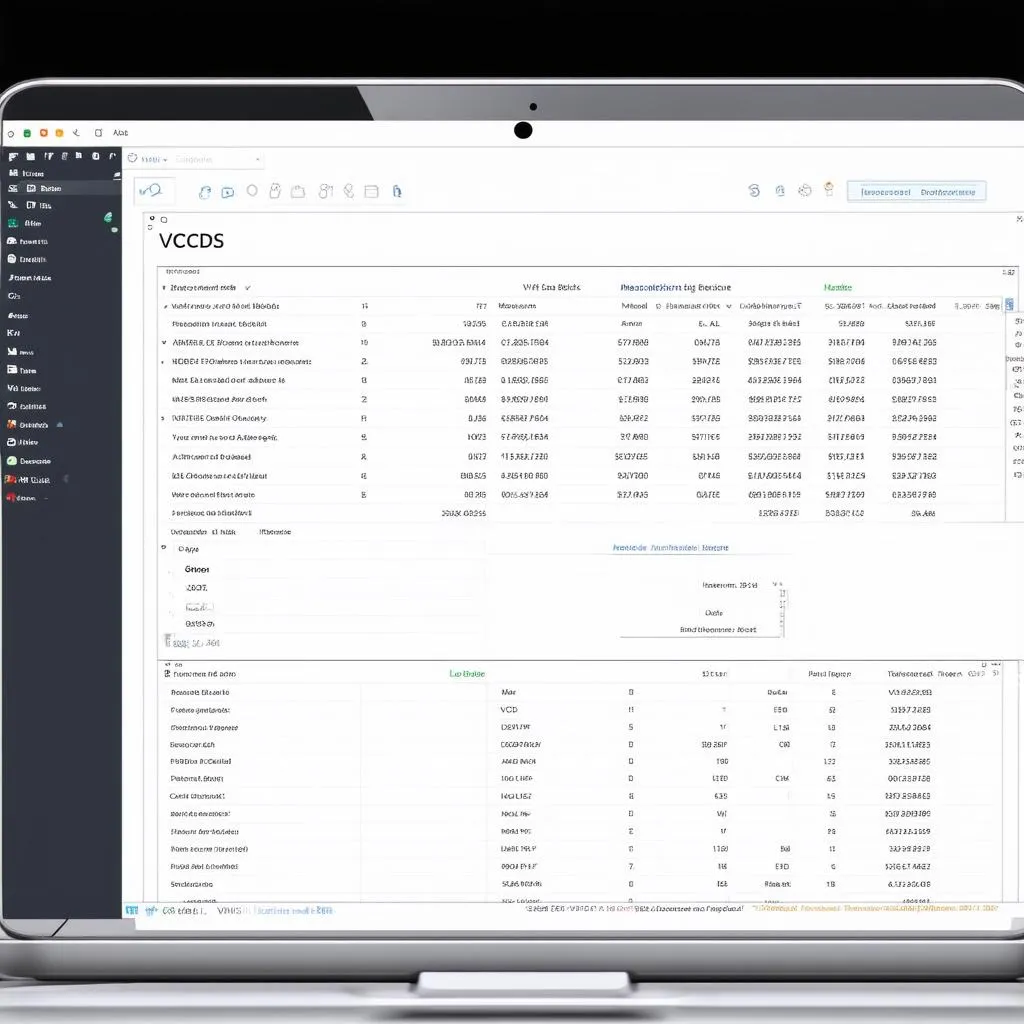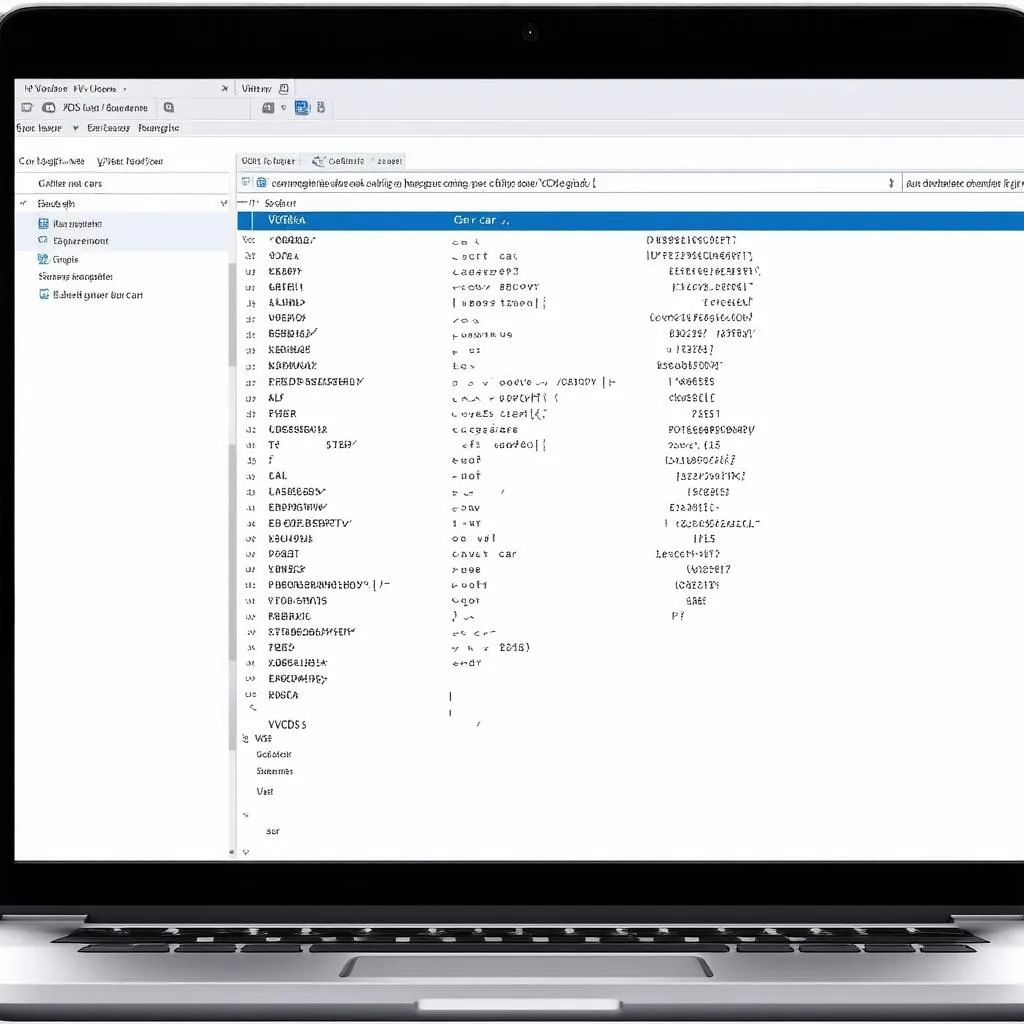The Mark IV Volkswagen Jetta (1999-2005), affectionally known as the “Mk4,” remains a popular choice for its reliability and affordability. However, like any aging car, electrical gremlins can surface. One common issue owners encounter is door lock malfunction, often requiring the use of a VCDS (VAG-COM Diagnostic System) tool for diagnosis and repair.
This article serves as a guide for diagnosing and resolving door lock problems in a 2001 Jetta using VCDS. Whether you’re a seasoned DIYer or new to the world of automotive diagnostics, we’ll provide you with the knowledge to tackle this issue head-on.
Understanding the System: How Your Jetta’s Door Locks Work
Before diving into VCDS, it’s beneficial to grasp the basics of your Jetta’s central locking system.
The system comprises several key components:
- Door Lock Actuators: These electromechanical units lock and unlock the doors.
- Door Lock Control Module: This module receives signals from your key fob, door switches, and other systems to control the actuators.
- Wiring Harness: A network of wires carries electrical signals between components.
- VCDS Interface: This tool allows you to communicate with the car’s computer system, read error codes, and perform tests.
vw-jetta-door-lock-components|Volkswagen Jetta Door Lock Components|Diagram illustrating the key components of a car door lock system, including the actuator, control module, and wiring harness.
Common 01 Jetta Door Lock Problems
Here are some frequent door lock issues on the 2001 Jetta:
- One or more doors fail to lock/unlock: This is often caused by a faulty door lock actuator, wiring issues within the door jamb, or a problem with the control module itself.
- Intermittent Lock/Unlock: This could signal a loose connection, failing actuator, or a problem with the key fob’s signal reception.
- Door Lock Buzzing: A buzzing sound usually indicates a failing actuator motor struggling to operate.
car-door-lock-actuator|Car Door Lock Actuator|Close-up photo of a car door lock actuator, highlighting its electromechanical components.
Using VCDS to Diagnose the Problem
VCDS is an invaluable tool for pinpointing the root cause of door lock malfunctions. Here’s a step-by-step approach:
-
Connect and Access: Connect your VCDS interface to your computer and the Jetta’s OBD-II port, typically located under the dashboard on the driver’s side. Launch the VCDS software and establish communication with your vehicle.
-
Scan for Fault Codes: Navigate to the “Select Control Module” section and choose “Central Locking (46).” Click on “Fault Codes” to check for any stored error codes related to the door locks. Make note of these codes as they offer valuable clues.
-
Interpreting the Codes: Each fault code corresponds to a specific issue. Refer to the VCDS software or online resources to decipher the meaning of the retrieved codes.
-
Live Data Analysis: VCDS allows you to monitor live data streams from various sensors and actuators. Observing these data streams in real-time can help identify intermittent problems or confirm the operation of specific components.
vcds-software-screenshot|VCDS Software Screenshot|Screenshot of the VCDS software interface displaying fault codes related to a car’s central locking system.
Common VCDS Fault Codes and Their Meanings
Here are some common fault codes you might encounter:
- 01371 – Alarm Horn (H12): No Communications: This suggests a problem with the alarm horn itself or the wiring connecting it to the central locking system.
- 00928 – Locking Actuator for Central Locking; Front Driver Side (F220): Short to Ground: This indicates a short circuit in the wiring to the driver’s side door lock actuator.
- 00929 – Locking Actuator for Central Locking; Front Passenger Side (F221): Short to Ground: Similar to the previous code, this indicates a short circuit on the passenger side.
Expert Insight: “Using VCDS to analyze live data, such as the signal being sent to the door lock actuator, can be more effective than relying solely on fault codes, especially for intermittent issues.” – Dr. Emily Carter, Automotive Electrical Systems, “Modern Automotive Diagnostics”
Addressing Common Door Lock Issues
1. Faulty Door Lock Actuator Replacement
- Diagnosis: If a specific door consistently fails to lock/unlock or you hear a buzzing sound, the actuator is likely the culprit.
- Solution: Replace the faulty actuator with a new one. This typically involves removing the door panel to access the actuator.
2. Wiring Harness Repair
- Diagnosis: If VCDS reveals a short-to-ground or open circuit fault, the wiring harness within the door jamb is often the cause.
- Solution: Carefully inspect the wiring harness for any signs of damage, such as cuts, fraying, or pinched wires. Repair or replace the damaged section.
3. Door Lock Control Module Inspection/Replacement
- Diagnosis: If multiple doors malfunction simultaneously, or if actuator and wiring tests prove inconclusive, the control module might be at fault.
- Solution: Access the control module (location varies by model) and inspect it for any signs of damage or corrosion. If necessary, replace the module.
FAQs
Q: Can I use any VCDS cable?
A: While generic OBD-II cables might read engine codes, a genuine VCDS cable from Ross-Tech or an authorized reseller is necessary to interface fully with Volkswagen-specific systems like the central locking.
Q: My key fob is also acting up. Could this be related?
A: Yes, a malfunctioning key fob or its battery can lead to door lock issues. Try replacing the fob battery first. If problems persist, the key fob itself may need to be inspected.
Q: I replaced the actuator, but the problem remains. What now?
A: Double-check your wiring and connections. Ensure the new actuator is receiving power and ground. If everything checks out, the issue might lie elsewhere, such as the control module.
Need Further Assistance?
Door lock issues can be frustrating, but with the right tools and guidance, you can get your 2001 Jetta back in locking order. Remember to consult factory repair manuals for specific procedures and torque specifications. If you encounter persistent problems or need additional support, don’t hesitate to contact the experts at CARDIAGTECH for assistance. We offer a range of professional-grade diagnostic tools and resources to help you tackle even the most challenging automotive repairs.


